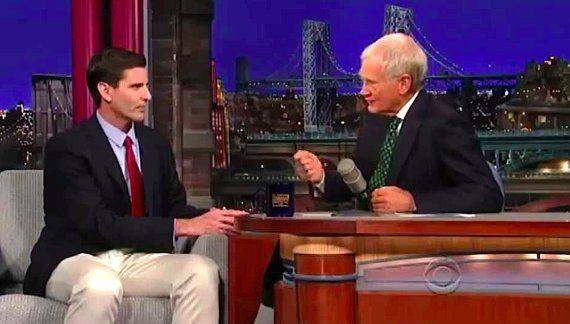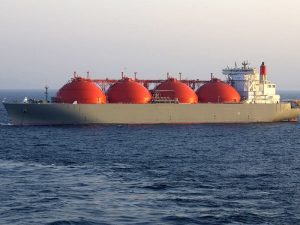Stanford Woods Institute for the Environment Senior Fellow Mark Jacobson says the United States has the technology and logistical ability to convert to all-renewable energy sources by 2050—if we can manage to exercise the social and political will to do so. He’s the guy who told David Letterman we already have enough wind to power the entire world “seven times over.” Now he has proven his point with a groundbreaking roadmap to clean energy for all 50 U.S. states.
With colleagues from academia and industry, Jacobson—a professor of civil and environmental engineering at Stanford and a senior fellow at the Precourt Institute for Energy—recently developed detailed plans that three states (New York, 2/18/13; Washington, 1/14/14; and California, yesterday—2/22/14) could use to switch over their energy infrastructures from conventional fuels to 100% renewable resources by 2050. As Jacobson uses the term, “infrastructure” includes electric power, transportation, heating/cooling, and industry uses. “Renewable power” is derived primarily from wind, water, and sunlight (WWS), generating electricity and electrolytic hydrogen.
Some findings of research behind the plans:
- Powering the U.S. with only wind, water, and solar energy sources would save the average consumer $3,400 per year.
- Over 15 years, driving an electric car could save $20,000-$40,000 in energy costs.
- In 2013, states endowed with greater wind power had energy costs increase 3 cents; all other states (except Hawaii) saw costs increase 4 cents.
- Large offshore wind farms could reduce hurricane storm surges up to 80% and wind speeds up to 50%.
- Powering the country solely with WWS could generate a 3% GDP uptick.
Jacobson presented details in the context of a roadmap for all 50 states to renewable energy. He spoke at the American Association for the Advancement of Science Annual Meeting in Chicago last week. His talk was part of a three-hour symposium titled “Is It Possible to Reduce 80% of Greenhouse Gas Emissions from Energy by 2050?“
Jacobson’s complete interactive roadmap, available online, shows how each state can maximizes its own renewable resource potential. “Hovering a cursor over California, for example, reveals that the Golden State can meet virtually all of its power demands (transportation, electricity, heating, etc.) in 2050 by switching to a clean technology portfolio that is 55% solar, 35% wind (on- and offshore), 5% geothermal and 4% hydroelectric.”
“The new roadmap is designed to provide each state a first step toward a renewable future. It provides all of the basic information, such as how many wind turbines and solar panels would be needed to power each state, how much land area would be required, what would be the cost and cost savings, how many jobs would be created, how much pollution-related mortality and global-warming emissions would be avoided.”
Last week, with Oscar-nominated actor Mark Ruffalo, film director Josh Fox,

Mosaic co-founder and presidentBilly Parish, and others, Jacobson launched the 50-state roadmap on the website of The Solutions Project, as part of their national public outreach effort to raise awareness about the possibilities of switching to clean energy produced entirely from renewable resources. Solutions Project member Leilani Munter, a professional racecar driver, also publicized the 50-state plan at a Daytona National Speedway event she participated in.
Says Jacobson:
“Global warming, air pollution and energy insecurity are three of the most significant problems facing the world today. Unfortunately, scientific results are often glossed over. The Solutions Project was born with the vision of combining science with business, policy, and public outreach through social media and cultural leaders — often artists and entertainers who can get the information out — to study and simultaneously address these global challenges.”
Several years ago, Jacobson teamed up with Mark A. Delucchi (a research scientist at the Institute of Transportation Studies at the University of California, Davis) to publish an article showing that the entire world could actually be powered by renewable energy.
Earlier this year CleanTechnica editor Zach Shahan also summed up some key points on clean energy and the electric vehicle revolution that Jacobson made at a Google talk.
You find more information about the Stanford doc’s work here.
Source: CleanTechnica. Reproduced with permission.











